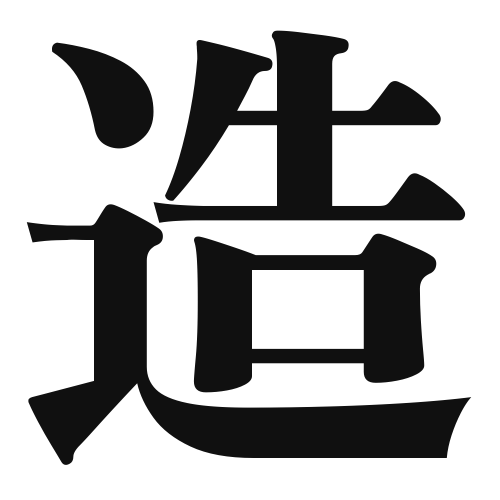1. Overview of Meaning
The kanji “造” (pronounced “zō” in Japanese) means “to create,” “to make,” or “to construct.” It is often used in contexts related to manufacturing, building, or producing something new.
2. Formation and Radical
Formation of the Kanji: The kanji “造” is a compound character (会意文字) that combines elements to convey its meaning. It consists of the radical “亻” (which represents a person) and “造” (which relates to making or constructing).
Radical: The radical of “造” is “亻,” which indicates that the action involves a person or human effort.
3. Examples of Usage
Common Words and Phrases: Some frequently used words that include “造” are:
- 製造 (せいぞう, seizō) – manufacturing
- 造船 (ぞうせん, zōsen) – shipbuilding
- 造形 (ぞうけい, zōkei) – modeling or shaping
Example Sentences in Daily Conversation:
- この工場では自動車を製造しています。
(This factory manufactures cars.) - 彼は新しい彫刻を造りました。
(He created a new sculpture.)
4. Synonyms and Antonyms
Similar Kanji: A similar kanji is “作” (さく, saku), which also means “to make” or “to create,” but it is often used in a broader sense, including artistic creation.
Opposite Kanji: An antonym is “壊” (こわす, kowasu), which means “to break” or “to destroy,” representing the opposite action of creating.
5. Cultural and Historical Background
Relation to Japanese Culture: The concept of “造” is deeply embedded in Japanese culture, particularly in traditional crafts and arts, where the act of creating is highly valued.
Proverbs and Idioms: One relevant proverb is “百聞は一見にしかず” (ひゃくぶんはいっけんにしかず), which translates to “Seeing is believing,” emphasizing the importance of experiencing creation firsthand.
